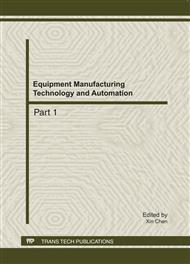p.511
p.516
p.523
p.529
p.533
p.537
p.544
p.548
p.552
New Applications of Laser on LED and Semi-Conductor Manufacturing
Abstract:
Laser technology has been applied in more and more areas of research. With its fast growth, faster and cheaper solution can be found in different industries. In this paper we present two applications of laser on LED and semi-conductor manufacturing. A new approach facilitated by laser micromachining for improving LED efficiency is introduced first. This is through change of stacking structure and the precision of up-to-date UV 355nm laser technology. The illumination area is increased due to the smaller connecting area (drilling size). Another work is the improving of leakage current of TiO2 film as dielectrics. Through the irradiation of 532nm DPSS laser the refractive index increases and the current leakage is reduced.
Info:
Periodical:
Pages:
533-536
Citation:
Online since:
August 2011
Authors:
Keywords:
Price:
Сopyright:
© 2011 Trans Tech Publications Ltd. All Rights Reserved
Share:
Citation:


